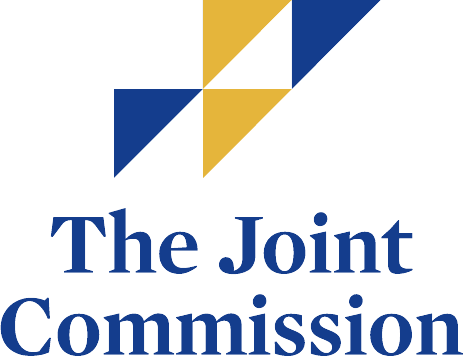Polydrug use is the practice of consuming multiple substances at the same time or one right after the other. Think legal and illicit substance combinations – like alcohol, cannabis, and cocaine. Or opioids and alcohol . . . or cocaine and heroin with alcohol. No matter the combination, polydrug use can have severe and unpredictable effects on your body and mind. One particularly dangerous combination is mixing stimulants and depressants. While some people believe these drugs can “balance each other out,” the reality is far more concerning.
Mixing these uppers and downers can lead to dangerous health risks, including heart complications, overdose, mental health issues, or worse.
What Are the Differences Between Stimulants and Depressants?
Stimulants and depressants affect the central nervous system in opposite ways. Stimulants increase the level of dopamine and can temporarily increase cognitive function and euphoric sensations. Depressants decrease the level of mental stimulation and physiological activity. While stimulants and depressants have valuable medical uses, they can also be misused, leading to dangerous consequences, especially when combined.
Stimulants (“Uppers”)
Stimulants increase alertness, energy, and heart rate, often creating a sense of euphoria or heightened focus. They are sometimes prescribed for legitimate health conditions like ADHD, asthma, obesity, and narcolepsy. But unregulated stimulants (meth, cocaine, ecstasy) work in the same way.
Common examples of stimulants include:
- Adderall
- Ritalin
- Methamphetamine
- Cocaine
- Ecstasy (MDMA)
Effects on the body can lead to:
- Heightened alertness and energy
- Elevated mood
- Reduced appetite
- Increased heart rate and blood pressure
Depressants (“Downers”)
Depressants slow down the nervous system, producing calming effects like relaxation and sedation. Medical professionals usually prescribe depressants for pain, anxiety, sleep disorders, or muscle relaxation.
Common examples include:
- Opioids (Fentanyl, Oxycodone, Hydrocodone, Morphine and Heroin)
- Benzodiazepines (Xanax, Valium)
- Sleep medications (Ambien)
- Barbiturates
- Alcohol
Effects on the body can lead to:
- Slowed heart rate and breathing
- Drowsiness and sedation
- Lowered blood pressure
- Reduced anxiety and inhibition
Why Do People Mix Stimulants and Depressants?
People mix stimulants and depressants for various reasons, often believing the false assumption that one drug will mitigate the adverse effects of another.
Some common motivations include:
- Counteracting Effects: People may take a stimulant to counteract the drowsiness sometimes caused by depressants or vice versa, attempting to maintain balance, which can lead to unpredictable drug interactions and strain on the body.
- Enhancing Euphoria: Some people mix uppers and downers to heighten pleasurable effects, looking to increase or intensify a high. Unfortunately, enhancing euphoria can increase the risk of overdose and other unintended adverse reactions.
- Social and Environmental Factors: Polydrug use is often associated with party culture, peer influence, and accessibility, leading people to experiment with drug combinations without fully understanding the risks.
Risks of Mixing Stimulants and Depressants
Combining stimulants and depressants is extremely dangerous due to their opposing effects on the nervous system. Major risks include:
- Cardiovascular Risks: Mixing these substances sends conflicting signals to the heart and circulatory system, increasing the likelihood of arrhythmias, heart failure, and stroke.
- Increased Risk of Overdose: Depressants can mask the stimulating effects of uppers, leading to higher doses than their bodies can handle, resulting in overdose.
- Mental Health Implications: Combining stimulants and depressants can lead to severe anxiety, paranoia, depression, and even substance-induced psychosis.
- Impaired Judgment and Coordination: Polydrug use significantly affects cognitive function, increasing the risk of accidents, injuries, and dangerous decision-making.
Commonly Used Dangerous Combinations
Some drug combinations are particularly hazardous and have been linked to severe medical complications and fatalities:
Alcohol and Cocaine
This mix produces cocaethylene in the liver, a toxic psychoactive substance that increases the risk of sudden death.
Adderall and Alcohol
Stimulants like Adderall mask alcohol intoxication, leading to excessive drinking and a higher chance of alcohol poisoning.
Heroin and Methamphetamine (Speedball)
Combining these drugs can lead to severe respiratory depression, heart failure, and a significantly increased risk of overdose.
Xanax and Methamphetamine
The combination of a depressant like Xanax with methamphetamine can lead to extreme confusion, respiratory distress, and an increased risk of overdose.
Fentanyl and Cocaine
This combination is particularly deadly, as fentanyl is a powerful opioid that can quickly lead to respiratory failure when mixed with a stimulant like cocaine.
Recognizing and Addressing Polydrug Use
Understanding the signs of polydrug use can save lives, as people suffering from substance use disorders are not always aware of the health risks associated with their drug combinations.
Warning signs of polydrug use include:
- Erratic behavior and mood swings
- Frequent confusion or memory problems
- Unexplained health issues such as irregular heartbeat or breathing difficulties
- Changes in social behavior, excessive lying, or other uncharacteristic behaviors
Seeking Professional Help
If you or a loved one is mixing uppers and downers, especially without medical prescriptions or supervision, or struggling with any polydrug use, professional treatment can help. Buena Vista Recovery offers comprehensive addiction treatment programs for those struggling with a range of drug and alcohol use disorders. Buena Vista Recovery offers treatment for substance use disorders in a full continuum of care, including medically supervised detox, residential/inpatient treatment, Intensive Outpatient Programming (IOP), virtual IOP, and MAT services and support. Our Treatment Advisors are available and eager to help answer your questions. Call 480-999-0851 or contact us online to take the first step toward recovery.
CHANDLER
3033 South Arizona Avenue
Chandler, Arizona 85248
TUCSON
5151 East Pima Road
Tucson, Arizona 85712
SCOTTSDALE
8171 E Indian Bend Rd
Scottsdale, AZ 85250




